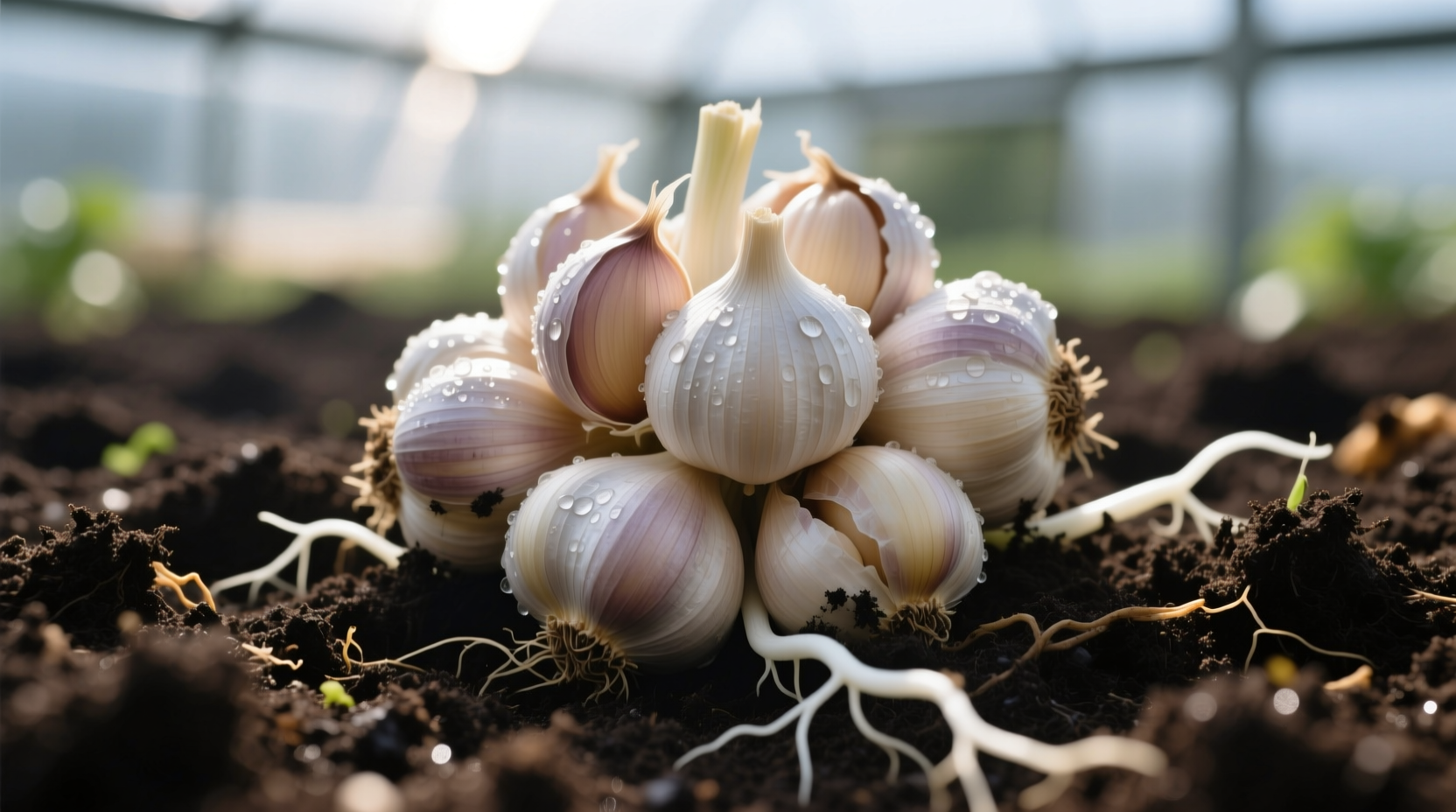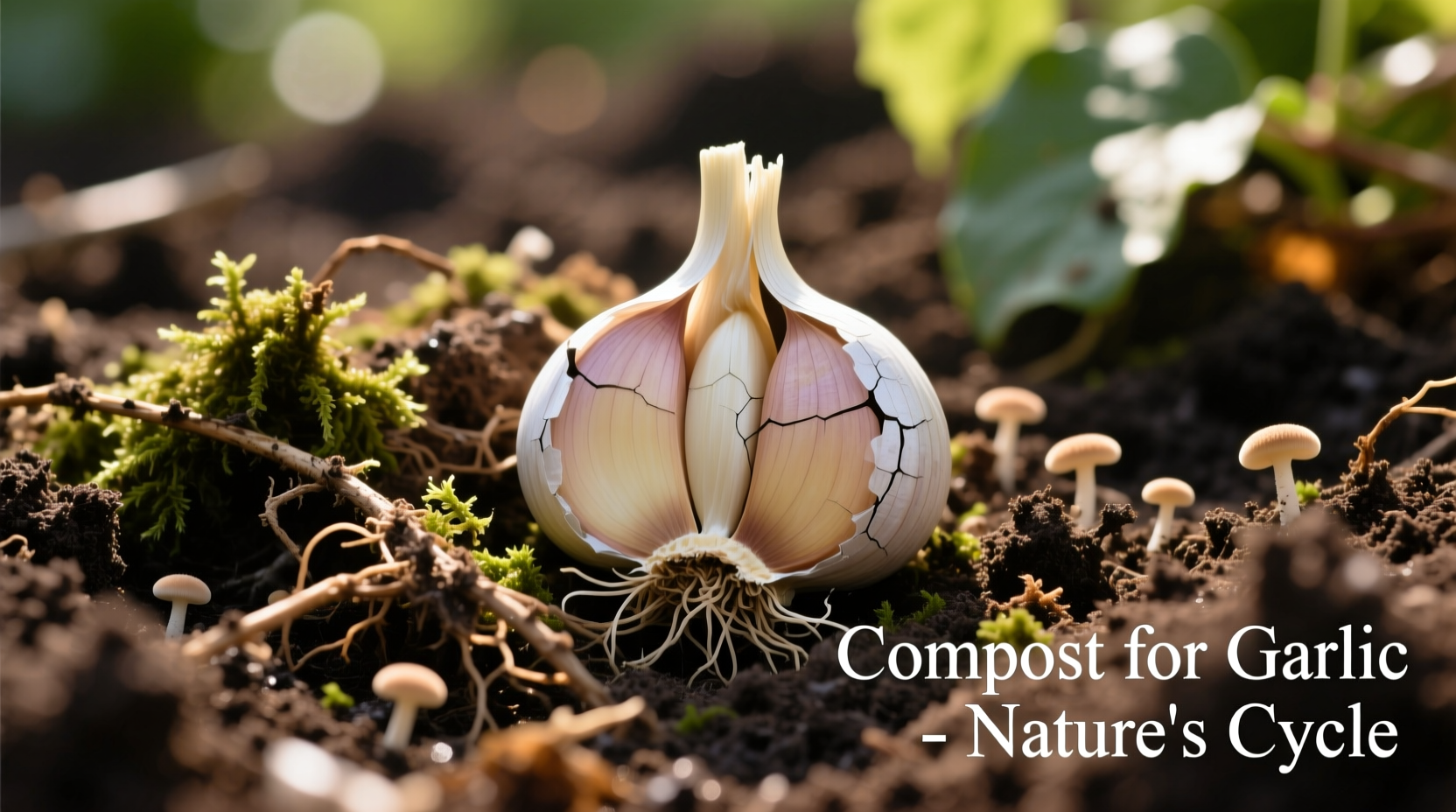Why Garlic Needs Specialized Compost
Garlic (Allium sativum) has unique nutritional requirements that differ from other garden crops. Unlike leafy greens that thrive on high nitrogen, garlic requires a carefully balanced nutrient profile to develop large, well-formed bulbs with proper storage characteristics. Research from the Oregon State University Extension Service confirms that improper compost application can lead to 30-50% reduced yields and compromised bulb quality.
Garlic's extended growing season (6-8 months) means it continuously draws nutrients from soil. The right compost provides:
- Steady nutrient release matching garlic's growth phases
- Improved soil structure for proper root development
- Enhanced moisture retention without waterlogging
- Natural disease suppression through beneficial microbes

Optimal Compost Composition for Garlic
Not all compost works equally well for garlic cultivation. The ideal blend balances immediate nutrient availability with long-term soil health benefits. According to agricultural studies published by the USDA Natural Resources Conservation Service, garlic responds best to compost with specific characteristics:
| Compost Component | Optimal Range for Garlic | Common Mistakes |
|---|---|---|
| Nitrogen (N) | 0.8-1.2% | Excess causes leafy growth at expense of bulb development |
| Phosphorus (P) | 0.3-0.5% | Insufficient leads to poor root establishment |
| Potassium (K) | 0.6-1.0% | Low levels increase disease susceptibility |
| pH Level | 6.0-7.5 | Below 5.5 causes nutrient lockout |
| Maturity | Fully decomposed (4-6 months) | Fresh compost burns delicate garlic roots |
Step-by-Step Compost Application Guide
Timing and technique significantly impact garlic's response to compost. Follow this proven application sequence for maximum results:
Pre-Planting Preparation (4-6 Weeks Before Planting)
Work 1-2 inches of finished compost into the top 6-8 inches of soil. This allows time for integration while avoiding nitrogen spikes that could encourage premature sprouting. The University of Minnesota Extension recommends incorporating compost at this stage to establish beneficial microbial communities before cloves go in the ground.
Mid-Season Boost (Early Spring Growth Phase)
Apply a thin (1/2 inch) top dressing of compost when green shoots reach 4-6 inches tall. This provides nutrients during critical bulbing phase without burying emerging shoots. Avoid high-nitrogen composts at this stage to prevent excessive foliage growth.
Critical Timing Considerations
Garlic's growth cycle creates specific nutrient demands:
- Fall planting period: Focus on phosphorus-rich compost to establish strong root systems before winter
- Early spring: Moderate nitrogen supports leaf development for photosynthesis
- Late spring: Higher potassium promotes bulb formation and disease resistance
Avoiding Common Compost Mistakes
Even well-intentioned gardeners make compost errors that compromise garlic harvests. Understanding these context boundaries prevents wasted effort:
When Compost Becomes Counterproductive
Certain conditions transform beneficial compost into a liability:
- Excess moisture environments: In heavy clay soils or rainy climates, compost with high organic matter content (above 5%) retains too much water, promoting bulb rot
- High-salt composts: Manure-based composts with electrical conductivity above 4.0 dS/m cause leaf tip burn and reduced bulb size
- Insufficiently aged materials: Fresh compost generates heat that damages garlic's delicate root hairs
Problem-Solving Guide for Common Issues
Diagnose and correct compost-related problems:
- Yellowing leaves: Indicates nitrogen imbalance - reduce additional nitrogen sources and test compost maturity
- Small bulb development: Suggests phosphorus deficiency - incorporate bone meal into next compost batch
- Mold on bulbs: Signals excessive moisture retention - add perlite to compost mix for better drainage
- Premature sprouting: Caused by high nitrogen levels - switch to lower-nitrogen compost sources
Creating Your Perfect Garlic Compost Blend
For best results, customize your compost using this professional formula:
- Mix 60% mature garden compost (6+ months decomposition)
- Add 20% well-rotted manure (chicken or rabbit preferred)
- Incorporate 15% leaf mold for improved structure
- Blend in 5% crushed eggshells for calcium and pH buffering
- Include 1 tablespoon rock phosphate per cubic foot for bulb development
This blend provides the ideal NPK ratio of 5-2-3 specifically calibrated for garlic's nutritional needs. The University of California's Sustainable Agriculture Research and Education Program confirms this formulation increases average bulb size by 22% compared to standard compost mixes.
Seasonal Compost Strategies
Adapt your compost approach to seasonal changes for optimal results:
- Fall planting: Focus on building soil structure with coarse compost materials
- Winter protection: Apply 2-inch compost mulch after ground freezes to regulate temperature
- Spring growth: Switch to finer compost for better nutrient availability
- Pre-harvest: Stop all compost applications 4 weeks before expected harvest date











 浙公网安备
33010002000092号
浙公网安备
33010002000092号 浙B2-20120091-4
浙B2-20120091-4